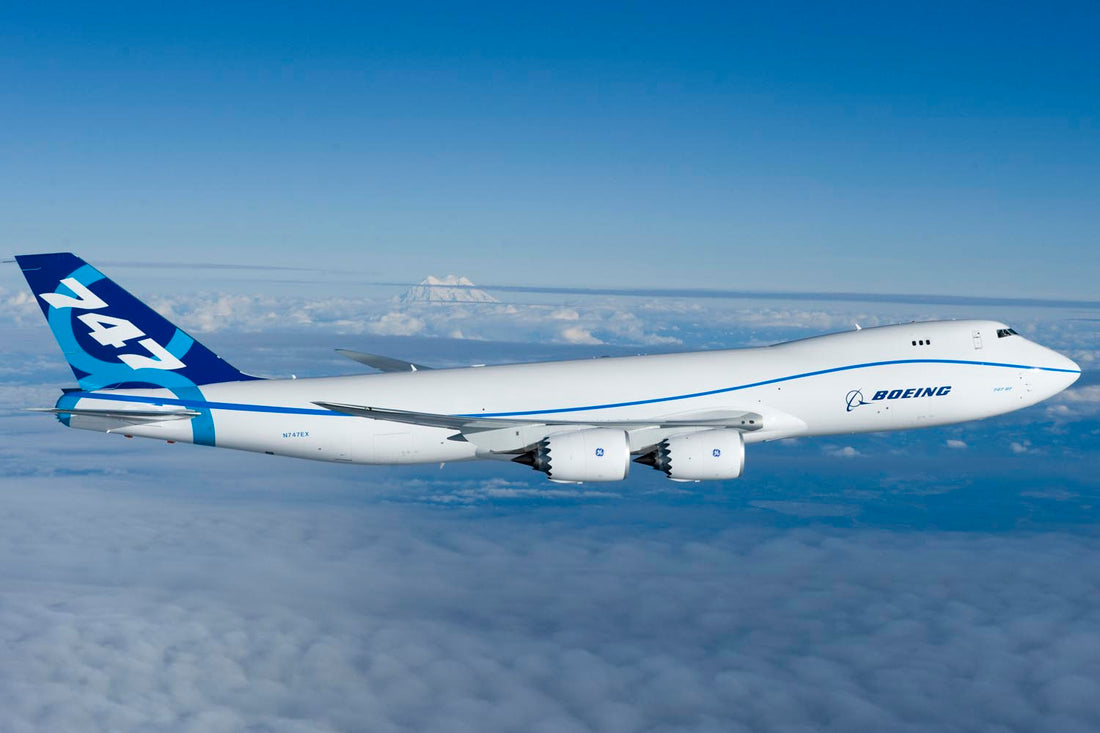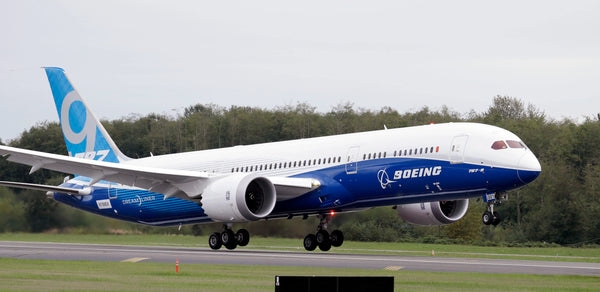The late 1960s were an era of boundless ambition. The globe was shrinking, but commercial aircraft still moved too slowly and carried too few people to keep pace with the rising tide of mass international travel. Aviation’s grand challenge was clear: move from the narrowbody constraint of the Boeing 707 to a revolutionary machine of massive scale, one that could transform air travel from a luxury into a worldwide utility. This challenge was met by an engineering marvel, a magnificent, double-decked behemoth that would forever change the skies and earn the eternal moniker, the Queen of the Skies.
It was the birth of the Boeing 747 jumbo jet, an aircraft whose sheer size and radical design philosophy demanded new factories, new engines, and a complete re-thinking of aircraft engineering. It was not merely a big airplane; it was an industrial statement of confidence and a soaring symbol of human ingenuity.
From Concept to Colossus
The impetus for the 747 began with a handshake between Boeing and the legendary founder of Pan Am, Juan Trippe. Trippe challenged Boeing to create an aircraft capable of carrying at least twice the capacity of the popular 707. Boeing’s Chief Engineer, Joe Sutter, led the team tasked with this monumental undertaking, affectionately known internally as "the Incredibles."

Joe Sutter(1921-2016)
The concept was born under immense pressure, driven by the belief that a high-capacity airliner would drastically reduce seat-mile costs, making global air travel more accessible and economical than ever before. Yet, there was a calculated risk: most industry experts believed the 747’s life as a passenger jet would be brief, destined to be quickly replaced by supersonic transports (SSTs). Therefore, the design had to anticipate its eventual conversion into an efficient global freighter—a necessity that led to the jet's most iconic feature.
A Design Born of Necessity
The most defining silhouette in modern aviation is the upper deck hump of the 747. It is not an aerodynamic ornament nor a pure luxury addition; it is a design born of necessity. The requirement for its eventual cargo conversion meant the aircraft had to incorporate a nose-loading capability, where the entire nose cone swung open for easy loading of massive freight pallets.

The Hump of Boeing 747
To allow the cockpit crew to operate safely above the opened nose and provide clear visibility, the flight deck was elevated. This placement naturally created the distinctive, elongated upper deck hump, which was initially used as a charming lounge or first-class area. What started as a functional engineering requirement for freighter use evolved into the iconic symbol of the 747—a feature that signaled scale, luxury, and the dawn of the widebody aircraft era.
Building the World’s First Jumbo Jet
The scale of the 747 program was staggering. To produce a jet of this size, Boeing had to build a facility large enough to contain it: the vast Everett factory north of Seattle, which remains the largest building in the world by volume. This factory became a cathedral of aviation innovation.
Structural integrity was paramount. The 747 introduced advanced load-bearing techniques and new alloys to handle its maximum take-off weight, nearly double that of previous jets. Crucially, the aircraft relied on an entirely new generation of propulsion: the high-bypass turbofan engine. Developed specifically for the 747, the Pratt & Whitney JT9D engine delivered unprecedented thrust and significantly improved fuel efficiency compared to the low-bypass engines of the 707. This innovation was the technological key that unlocked the jumbo jet’s economic viability and ushered in the era of true widebody performance.

Pratt & Whitney JT9D engine
Power Meets Grace
Despite its intimidating size, the 747 possessed remarkable grace in the air, thanks to its sophisticated aerodynamic design. The substantial wings featured a pronounced wing sweep of 37.5 degrees, an angle carefully chosen to reduce drag and allow for high subsonic cruise speeds near Mach 0.85, matching or exceeding its smaller predecessors.
Controlling a jet of this mass required revolutionary high-lift systems. The trailing edges featured complex, multi-element Fowler flaps—massive, slotted surfaces that extended the wing area by nearly 25% on approach. This system, along with leading-edge Krüger flaps, generated the necessary lift for slow-speed control during takeoff and landing, allowing the 747 to operate safely from existing runways. This combination of size and efficiency defined a new standard for long-haul capability.
The Age of High-Capacity Luxury
The introduction of the twin-aisle widebody cabin fundamentally changed the passenger experience. For the first time, commercial aircraft cabins offered a sense of spaciousness, with high ceilings and wide bodies that reduced the claustrophobic feeling common in narrowbody jets.
Airlines quickly capitalized on this scale, initially embracing a sense of in-flight opulence. The famed spiral staircases led to the plush upper deck lounges, often outfitted with bars, pianos, and luxurious seating. Even in economy, the twin-aisle configuration allowed for a variety of seating arrangements, making cabin comfort a primary marketing point. While economics eventually led to denser configurations, the 747’s spacious cabin revolutionized what passengers expected from long-haul aviation.

Twin-aisle configuration
Adapting to the World’s Needs
The genius of the Boeing 747 design lay in its adaptability. The initial 747-100 paved the way for the more capable 747-200, featuring greater range and engine power. The shorter-bodied 747SP (Special Performance) was developed for ultra-long, thin routes, proving the jet’s flexibility.
The true workhorse and peak of the original 747 program was the 747-400, introduced in 1989. With its two-person cockpit, advanced flight deck technology, and the unmistakable six-foot winglets that boosted aerodynamic efficiency and range, the -400 defined long-haul travel for two decades. Its latest iteration, the 747-8, stretched the fuselage further and incorporated modern technology derived from the 787 Dreamliner, ensuring the Queen of the Skies remains relevant in the 21st century for its unmatched cargo conversion capability.
The Queen of the Skies
The Boeing 747 is more than an airplane; it is a global phenomenon. It democratized air travel, connecting continents and making the world accessible to millions. Every subsequent large jet—from the Boeing 777 and Boeing 787 Dreamliner to the Airbus A380—stands on the foundational innovation pioneered by the jumbo jet.
Today, while its passenger services diminish, the 747’s immense capacity and unique nose-loading feature make it an indispensable heavy-lift cargo conversion freighter. Its powerful silhouette remains a global symbol of prestige and capability, and the surviving airframes in museums are powerful testaments to the golden age of flight, symbolizing human ambition made airborne.
A Design That Defined Generations
The story of the Boeing 747 is the definitive story of aircraft engineering excellence in the modern era. From the pressure of the Pan Am requirement to the audacious scale of the Everett factory, and from the functional necessity of the upper deck hump to the technological leap of the JT9D engine, every element of the Boeing 747 design was revolutionary. It did not just carry passengers; it carried the hopes and aspirations of a newly connected world. The 747 redefined capacity, luxury, and efficiency, and decades after its introduction, it remains the ultimate symbol of human ambition and aerospace mastery.

Boeing 747 wooden model
Honoring the Legend
The Boeing 747 remains an enduring symbol of innovation, scale, and grace — a masterpiece that redefined global air travel and carried the world into the modern jet age. Celebrate this aviation icon through our exclusive collection of handcrafted Boeing 747 wooden models, each meticulously designed to capture the elegance of its signature hump, sweeping wings, and commanding presence in flight.
Bring home a piece of aviation history today — own a handcrafted Boeing 747 model and honor the engineers, designers, and dreamers who created the “Queen of the Skies.”
✈️ Own This Piece of Aviation© PremiumWoodArt — Fuel Efficiency and Performance


